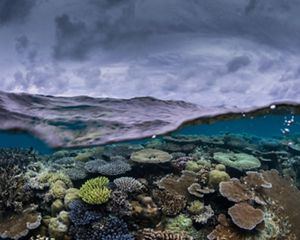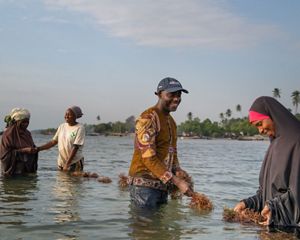Ten Ways to Unlock an Ocean of Opportunity
Solutions for ocean health, marine life and climate adaptation.
Close your eyes and think of the ocean. What comes to mind? Expanse, adventure, a sense of the unknown? Perhaps the wondrous world of marine life, with its creatures of all colours, shapes and sizes. What can you smell and hear? Salt, seaweed, the rhythm of waves crashing to shore? Whatever comes to your mind, one thing is certain—the ocean is critical to humans. It produces more than half of the oxygen we breathe and is the primary source of food and income for more than 3 billion people globally.
Our global insights, straight to your inbox:
Get our latest research, insights and solutions to our planet’s biggest challenges.
Get our newsletterSadly, this amazing and essential part of our world is in danger. The global sea surface temperature has hit a new record, only around 8% of the ocean is legally protected, and about a third of the world’s monitored fisheries are overfished. Globally, we have already lost half of our mangroves and half of all coral reefs. And pollution is increasing: 80% of global sewage flowing into our ocean untreated, and more than eight million tons of plastic entering the ocean each year.
Now is the time to tackle these threats—and not one at a time, but holistically. That means that we need to protect and restore more of the ocean, manage activity sustainably, and reduce the impacts of climate change. There may be choppy waters ahead, but TNC is working with partners, communities and policymakers all over the world to chart a new course to a brighter, bluer future.
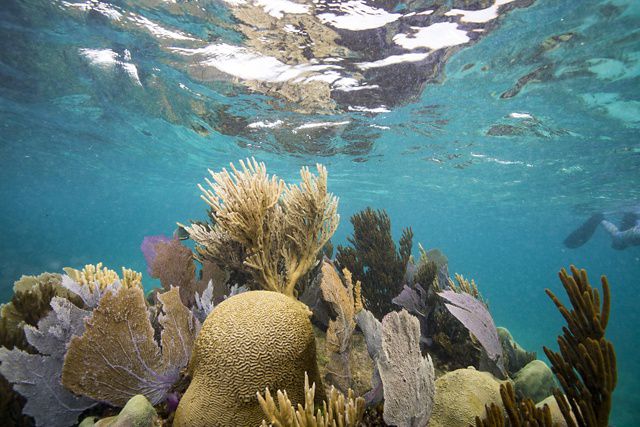
1. Creating more, and more effectively protected areas
Of the vast expanse of the ocean, only a small portion is currently protected. We need to conserve at least 30% of the global ocean through protected or conserved areas. And, we need to effectively manage activities across the whole ocean to sustain long-term health, increase resilience to climate change and support healthy fish populations. Examples include Indigenous-led MPAs in Canada, in the global heart of marine biodiversity in Indonesia, Micronesia, the largest barrier reef in the Western Hemisphere, and many other regions around the world.
2. Leveraging long-term financing for large scale protection.
The ocean covers 2/3 of the planet, but it receives only a fraction of the funding dedicated to protecting nature. That’s why TNC is developing new and innovative financial solutions for the ocean. Take a trip around projects from Gabon to Belize to Barbados to The Seychelles, where innovative finance and conservation science and planning is helping governments and communities create and effectively manage protected areas, or learn about the first-ever insurance policies protecting coral reefs in Mexico and Hawaii.
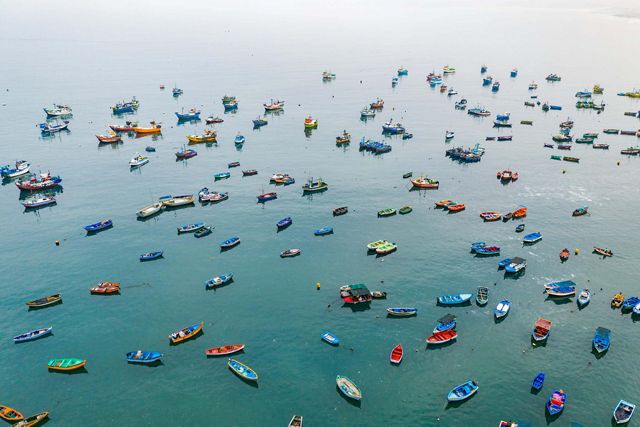
3. Fishing sustainably
Overfishing, habitat destruction and trapping of non-target species are major threats to both ocean life and our global food supply. New initiatives like the cutting-edge FishPath management approach and establishment of the Pacific Island Tuna company show new ways to manage marine resources. We’re also learning valuable lessons from projects focused on nearshore fisheries in Hawaii, the Queen conch fishery in the Caribbean, and anchoveta fisheries in Peru. Illegal, unreported and unregulated (IUU) fishing continues to undermine efforts to manage fish populations and cause significant economic `losses. TNC is working with the European Union, as well as many other regions, to help improve transparency and traceability of seafood supply chains.
4. Working with communities
Indigenous peoples and local communities are essential custodians of many of the world’s remaining natural landscapes and critical coastal areas. When we’re invited to collaborate, TNC works in partnership with Indigenous peoples and local communities to support their vision, learn from their stewardship experiences, and amplify their leadership. Communities are leading the way—whether it’s a women-led octopus fishery in Kenya, endangered leatherback sea turtle conservation in the Solomon Islands (also women-led) or a community-led fishery in Peru that has brought their fishing stocks back from collapse.
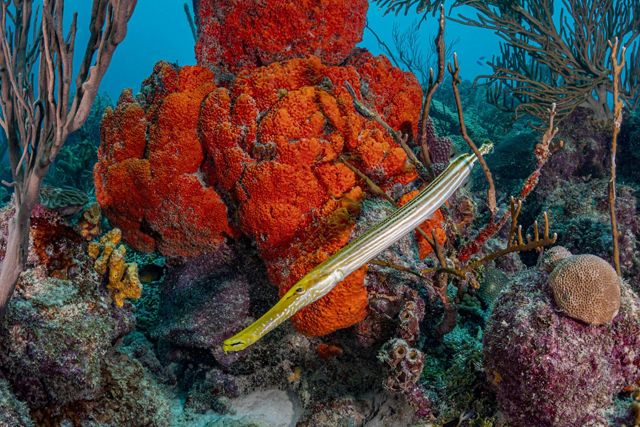
5. Conserving and restoring coral reefs
Coral reefs cover less than 1% of the world’s surface area, yet they support 25% of all marine life. They are also critically important for people, supporting fisheries, tourism, and coastal protection—reefs can absorb up to 97% of a wave’s energy. Some recently discovered reefs are able to withstand climate change impacts. But unless we take immediate action, we could lose up to 90% of coral reefs within our lifetimes. In Florida and the Caribbean, urgent and innovative restoration efforts are helping to provide new hope for corals. All over the world, TNC is working with communities, NGOs, governments, businesses, and funders to urgently scale up the conservation and restoration of these beautiful and vital underwater gardens.
6. Tackling climate change
Coastal habitats like mangroves, seagrasses and tidal marshes punch above their weight when it comes to storing huge amounts of carbon—affectionately called “blue carbon” (watch our explainer video to learn more). Their destruction releases greenhouse gases back into the atmosphere, exacerbating global warming. Conserving and restoring these habitats is critical to maintain their sequestered carbon and ensure it is not released back into the atmosphere. Community and partner action in Virginia and the Caribbean show what’s possible. And these habitats do more than just limit further warming—like coral reefs, they also serve as natural barriers that protect coastal communities from storms and erosion.
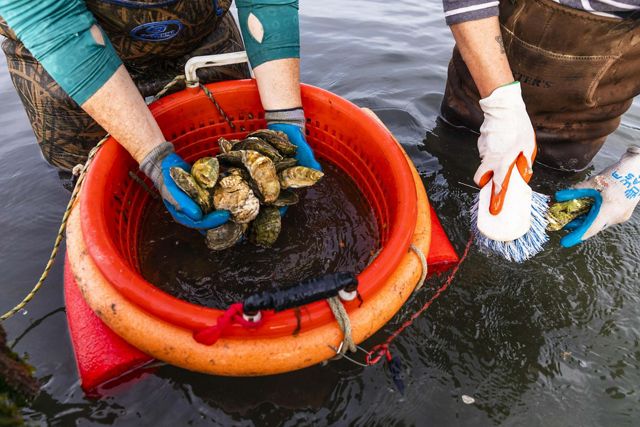
7. Ramping up regenerative aquaculture
Aquaculture is the fastest-growing form of food production—and it can also be one of the most environmentally efficient. This is especially true for bivalves (think oysters and scallops) and seaweed, which are climate-friendly and require almost no additional feed or freshwater. Whether it’s helping oyster growers recover from economic shocks, restoring livelihoods and habitat through seaweed farming in Belize and Indonesia, or collaborating with NASA on smart siting of fish farms in Palau using native species, aquaculture done right can help us all chart a more sustainable path forward.
8. Using science, advocacy and education
To ensure our conservation work is scalable and able to create the transformational change needed for both people and nature, we need policy that is evidence-based and grounded in science, TNC’s strong suit. Education is also key, and our NatureLab program is helping educate students of all ages—and their parents—about subjects like coastal frontline communities and climate justice.
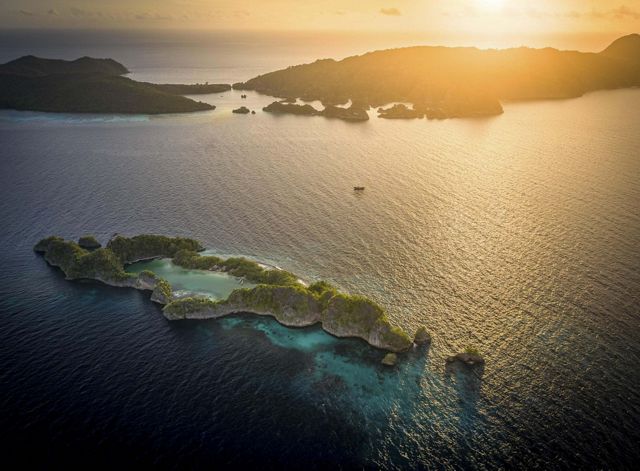
9. Contributing to global policy
In December 2022, world leaders agreed on a new set of global targets to protect nature, including to sustainably manage fisheries areas and to conserve 30% of the ocean by 2030 - just seven years from now. Leaders also negotiated a new treaty for the “high seas” in March 2023 that calls for the conservation and more sustainable management of the open ocean, but countries have yet to ratify it. These big, bold commitments are an essential next step, but now we need to act urgently to put them into practice.
10. Adapting to change
With temperatures warming, populations growing, and our planet constantly changing, we must be prepared to adapt if we want to preserve life in the ocean. Healthy, ocean habitats—from reefs and seagrass to marshes and dunes—help defend us from climate impacts and create more resilient communities (watch our climate adaptation explainer video to learn more). Action on World Ocean Day is critical, and we are committed to action every day to protect our planet.
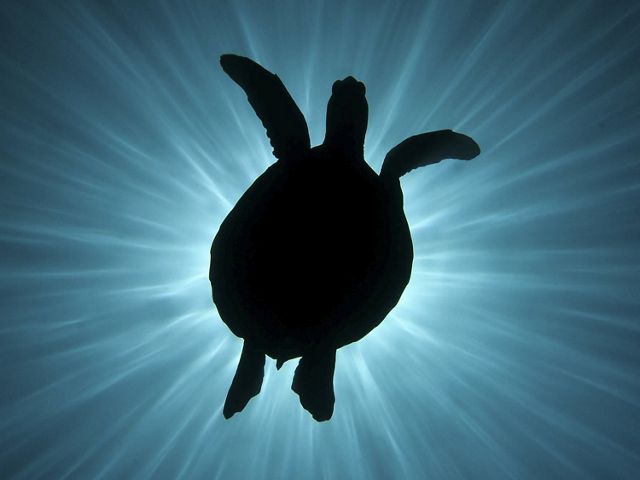
Conserve 30% of the Ocean by 2030
TNC supports the global goal of conserving at least 30 percent of the planet’s land, ocean and inland water over the next decade. To contribute to that goal, by 2030 TNC intends to conserve 4 billion hectares (more than 10% of the world’s ocean area) while benefitting 100 million people at severe risk of climate-related emergencies. Learn more about TNC’s 2030 goals.


